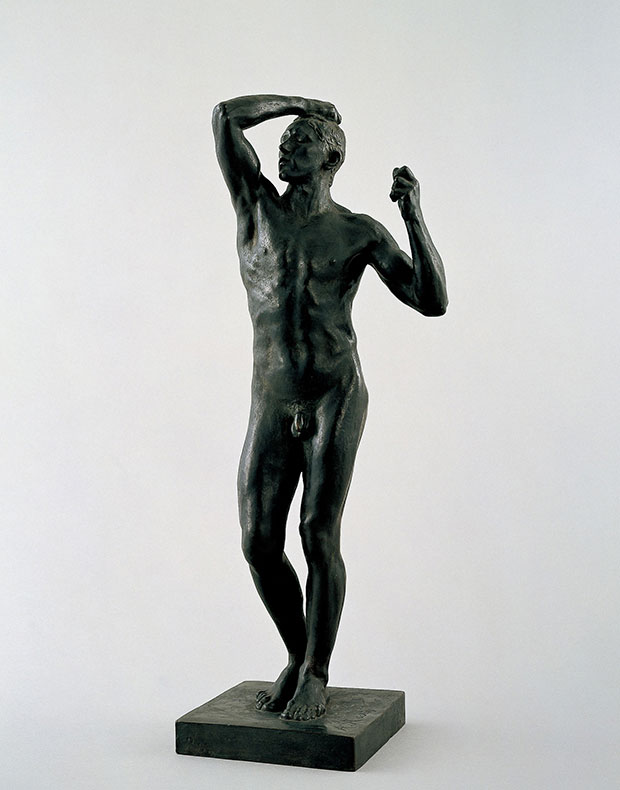Called the father of modern sculpture, the nineteenth century French sculptor Auguste Rodin (1840-1917) is known for shattering tradition and launching a revolution in sculpture. When first shown, his powerful sculptures were regarded as scandalous. His The Age of Bronze, for example, was criticized for directly reproducing the model. While it was, of course, Rodin who had sculpted the work with his own hands, through the eyes of people at that time it seemed too raw and lifelike.

In 1854, at the age of fourteen, Rodin entered the Petite École, a school specializing in art and mathematics. For four years, until 1857, he worked diligently at studying drawing and sculpture. Despite, however, the remarkable accomplishments and talent he demonstrated there, he failed to win entry to the École des Beaux-Arts and apprenticed himself to become a maker of architectural ornaments instead. At the same time, he began taking classes from Antoine-Louis Barye, the animal sculptor at the Museum of Natural History, while also continuing to study on his own. He said that Barye was his instructor in art. “He made me study nature closely and taught me the necessity of understanding nature. Barye led me in my art education until I was able to walk alone.” We imagine Rodin as a revolutionary, but he learned a great deal from his predecessors.
Rodin believed that the artist should interpret the inner truth as well as the external face of nature. He said that he depicted muscles moving to reveal the feelings that moved them. The sculptress Camille Claudel was Rodin’s apprentice, his aid, his model, and his lover, twenty-four years younger than himself. She is said to have had a stormy personality; but in his sculpture of her, Rodin removed details of expression and boldly depicted her voluptuous flesh, while presenting her as a young girl with a quiet, serene expression. Was Rodin showing us the inner Camille?
In 2017, a hundred years after Rodin’s death, a major retrospective was organized in his France, his native land. Rodin’s work had been introduced in Japan quite early on. In 1916, Takamura Kotaro published Rodan no kotoba (The Words of Rodin), followed by Zoku Rodan no kotoba (The Words of Rodin, Continued) in 1920. Rodin’s Words are an invaluable resource for understanding his view of art and have since been published in many different forms. If you see a copy at the library, please pick it up and have a read.
Curator:Kyoko Kagawa
*All statements attributed to Rodin are from Takamura Kotaro, trans. Rodan no kotoba sho (Excerpts from Rodin’s Words), Iwanami Bunko.













Art? No one creates anything! We only interpret nature according to our own dispositions. That is all!
From Takamura Kotaro, trans., Rodin’s Words, Iwanami Bunko